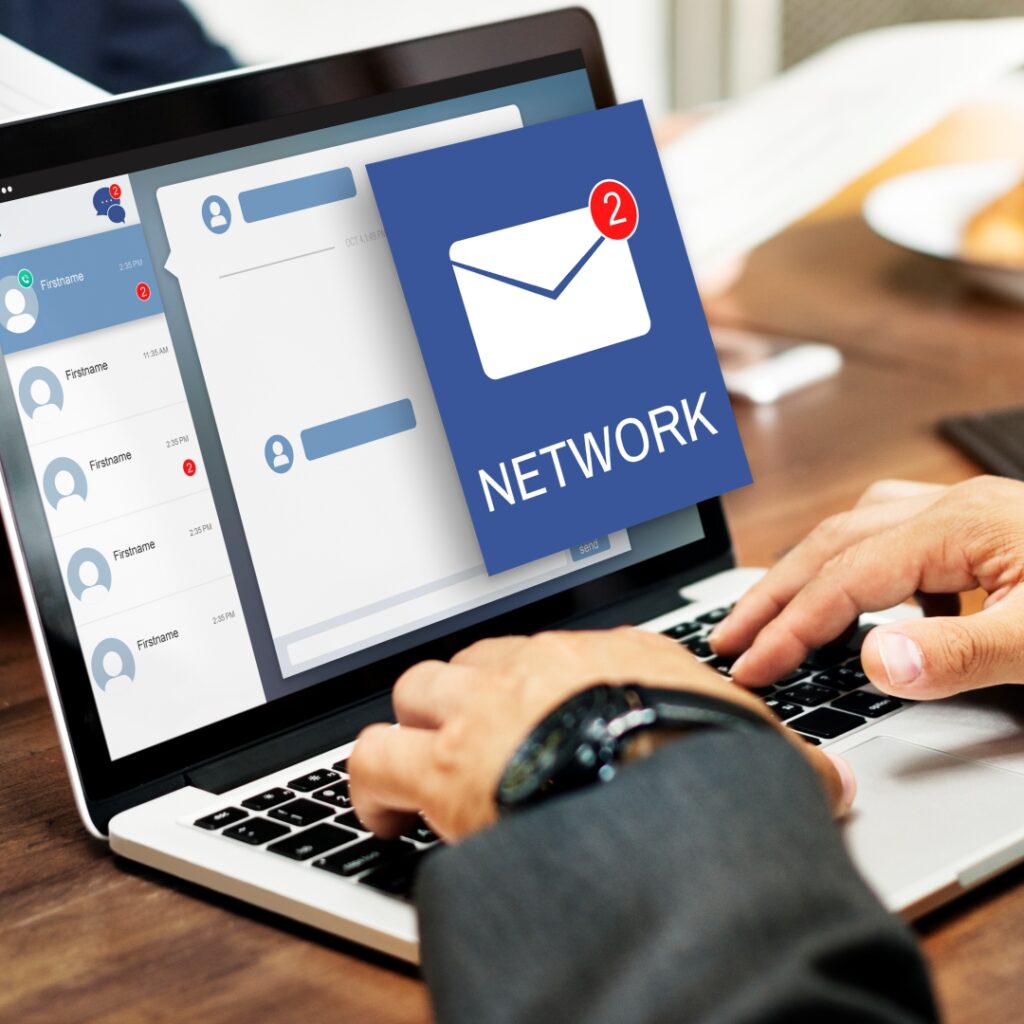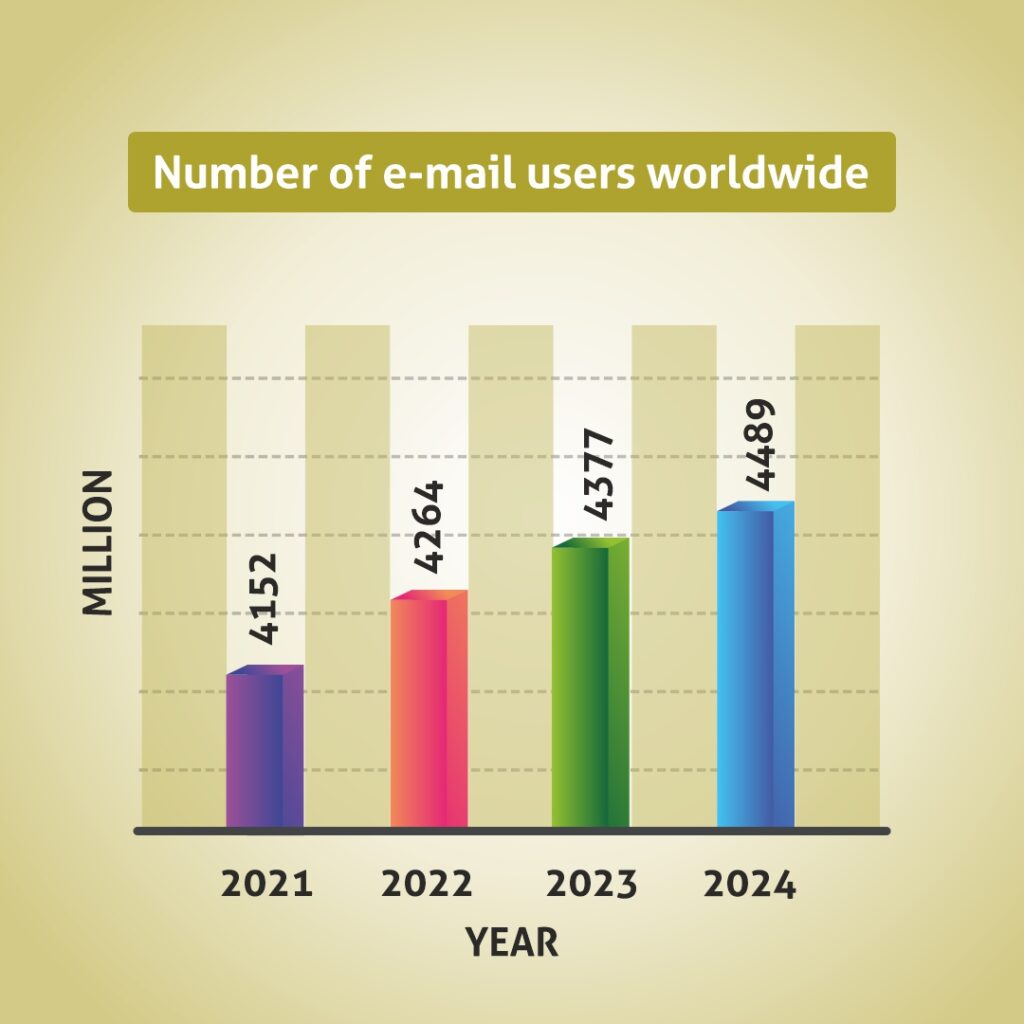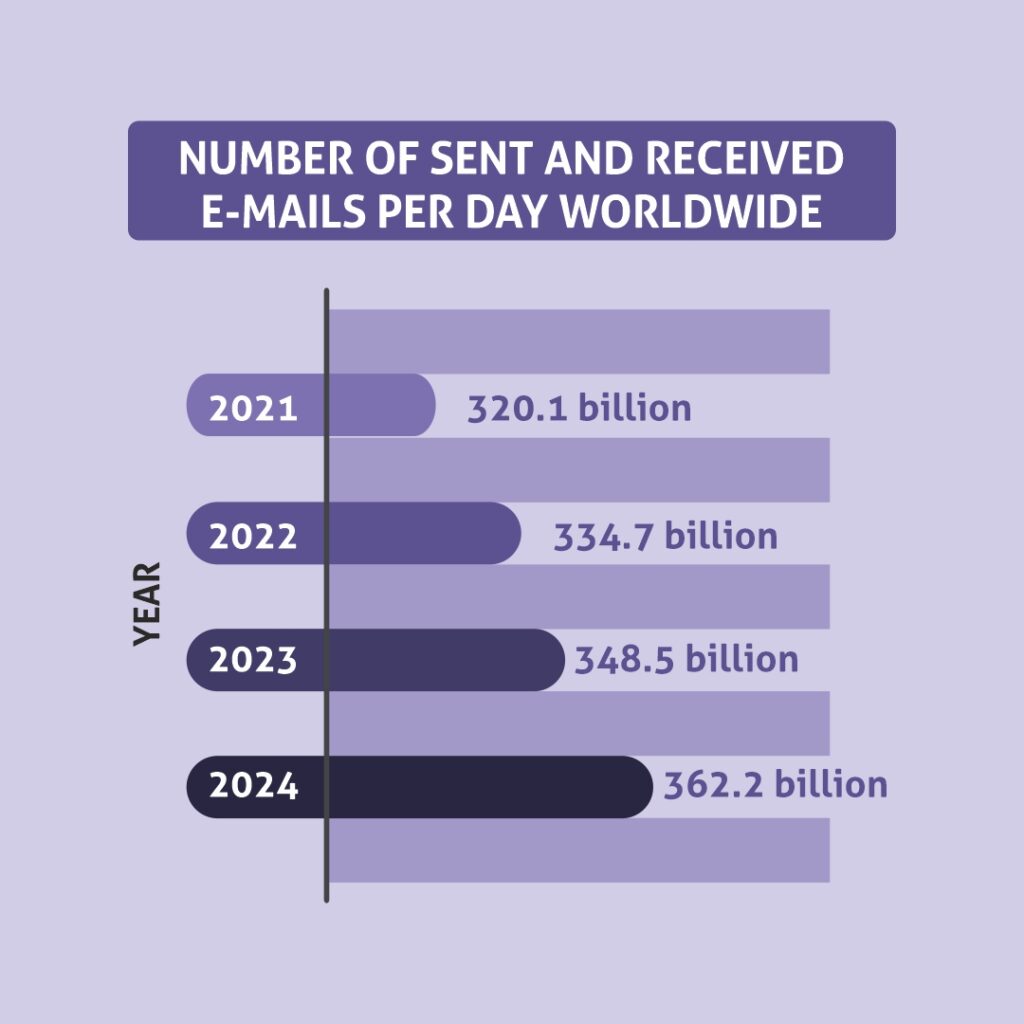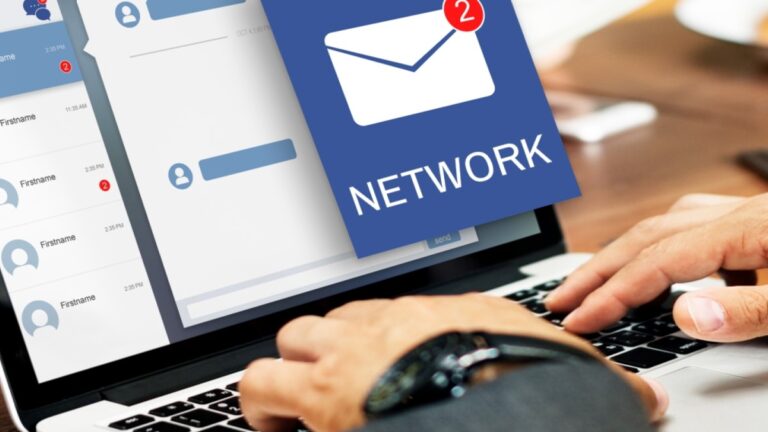Do you ever get the feeling that you’re the only one who doesn’t use email? You do not have to feel excluded. If you’re new to email, you’ll find that with a little experience, it’s simple to comprehend and use.
Email (electronic mail) is a method of communicating through the Internet. It’s comparable to regular mail, but there are a few important distinctions.

You’ll need an email account and an email address to receive emails. You’ll also need to get other people’s email addresses if you wish to send them emails. Some of the major advantages of e-mails over other modes of communications are discussed below and we list down four of those advantages.
Cheap Alternative
Because it is person-to-person communication technology, e-mails turn out to be a less expensive alternative to telephone conversations. It comes at a modest price. You may send one message to multiple recipients at once, making it an effective way to get your message out there.
Evergreen
An email is a useful tool for sending one-way communications or engaging in non-time-sensitive two-way communication. When employees send emails to colleagues or clients, the receivers can read them and answer when they have time. It’s not a good idea to send emails when a quick answer is required. When time is of the essence, speaking with someone in person, sending an instant message, a text, or calling someone is usually the best option.
Less scope for Miscommunication
One disadvantage of email’s rapid rise has been a decrease in the usage of more customised communication. When it comes to contacting potential clients and sending confirmation and thank you emails, sales and service representatives might go overboard with email. Instead of walking across the office to speak with a coworker, many members of workgroups choose to sit at their workstations and write emails.
Work Management
Companies may now have more dispersed and diversified work teams thanks to email. Employees can sometimes communicate and collaborate without having to speak face to face. In these situations, businesses deploy virtual work teams, in which employees collaborate on the same projects and duties. These groups frequently utilize virtual-team software to share files and conduct virtual meetings, but they also communicate via email. Email helps employees at multinational corporations to communicate across national boundaries.
We have decided to split the Blog into three major sections to show the trends and future projections. First, we will look at the most important number – the total number of email users worldwide, next thing we will see if those users are using the e-mail then in total how many e-mails are being sent and received in a day worldwide and the last interesting data that you might be interested are that which company has the largest market share in domain of e-mails. So let’s
get started.
Number of e-mail users worldwide
In 2021, the total number of email users worldwide stood at 4152 million and in 2022 this number rose to 4264 million showing a rise of 2.70%. In 2023, this number is projected to rise to 4377 million and if we will see a rise year-on-year from the base year 2022, it is around 2.65% and finally, for the year 2024, the number of e-mail users worldwide may rise to around 4489 million, approximately 2.55% increase over the year 2023.

Now we have seen the number of e-mail users worldwide so the next logical thing to note is the number of e-mails sent and received per day worldwide.
Number of sent and received e-mails per day worldwide
This data presents a comparative analysis of several sent and received e-mails per day worldwide. We are again taking the data of 4 years to analyse it. 2021- the past year, 2022- the current year and future projections for the years 2023 and 2024.
In 2021, the total number of sent and received e-mails per day worldwide stood at 320.1 billion and in 2022 this number rose to 334.7 billion showing a rise of 4.56%. In 2023, this number is projected to rise to 348.5 billion and if we will see a rise year-on-year from the base year 2022, it is around 4.12% and finally for the year 2024 then a total number of sent and received e-mails per day worldwide may rise to around 362.2 billion, approximately 3.93% increase over the year 2023.

The major thing to note from the above two data sets is that the total number of sent and received e-mails per day worldwide is set to increase at a faster rate than the total number of email users worldwide. In essence, it also shows that not only the number of new users are going to increase but also the number of e-mails sent and received is also set to increase. So the crux is that we are going to see the increase both in a vertical and horizontal fashion, that is, the depth and width of the user base is both bound to see an increase.
Market share of the most used e-mail clients
In this section, we will be going to see the market share of the top email clients. There are some of the biggest players involved in providing users with e-mail services. Some of the biggest services providers are Apple, Google and Microsoft with their various products and services and across platforms like Smartphones, Desktops, Tablets and in essence with wearables it is now available virtually almost all the internet-enabled devices. First, we will see a brief introduction of all these players and then in the last section, we will see the market share they have grabbed at present.
Apple Mail (formally known as just Mail) is an email client bundled with Apple Inc.’s macOS, iOS, iPad, and watchOS operating systems. Following Apple’s 1997 acquisition of NeXT, Apple Mail evolved from NeXTMail, which was originally built by NeXT as part of their NeXTSTEP operating system.
Gmail (pronounced “gee-mail”) is a free Web-based e-mail service that gives customers a gigabyte of message storage and allows them to search for individual messages. Gmail also creates a conversational thread by automatically grouping comparable messages.
Microsoft Outlook is an email client that allows you to send and receive messages. It’s also used to keep track of personal information including calendar appointments and other similar entries, tasks, contacts, and notes. Microsoft Outlook, on the other hand, is not free; if you want to use it, you must either buy it outright or subscribe to it.
The highest share of market share is grabbed today by Gmail that is being provided by Google. It has a share of close to 37.6%. Next comes Apple’s iPhone which has a market share of 34%, followed by Apple Mail 10% and then Outlook, provided by Microsoft, which has a market share of around 6.4%.
While emails have several drawbacks, it is quite doubtful that they will ever be phased away. Because email has grown so pervasive in business, it’s impossible to envisage a period when it won’t be utilized in some capacity. While instant messaging services are extremely effective and efficient, especially for casual, internal communication, emails will continue to be the preferred method for more official conversations with clients and third parties. You’d think that with so many modern communication platforms available—Slack, Zoom, Asana—internal email interactions would be dwindling in popularity. Email, on the other hand, has held its own. But as we have seen in this Blog, e-mail is here to stay and in fact, is bound to show a rise and is not diminishing.




